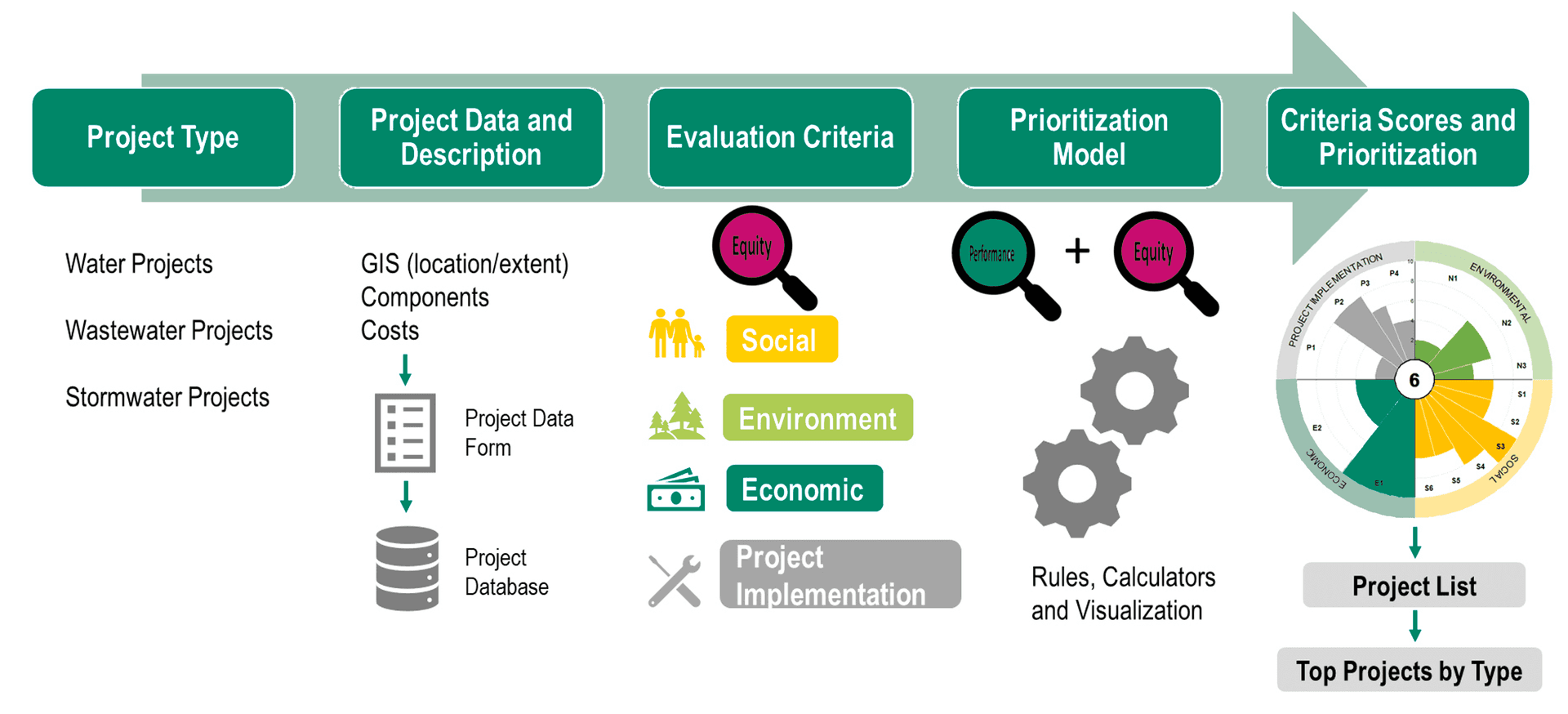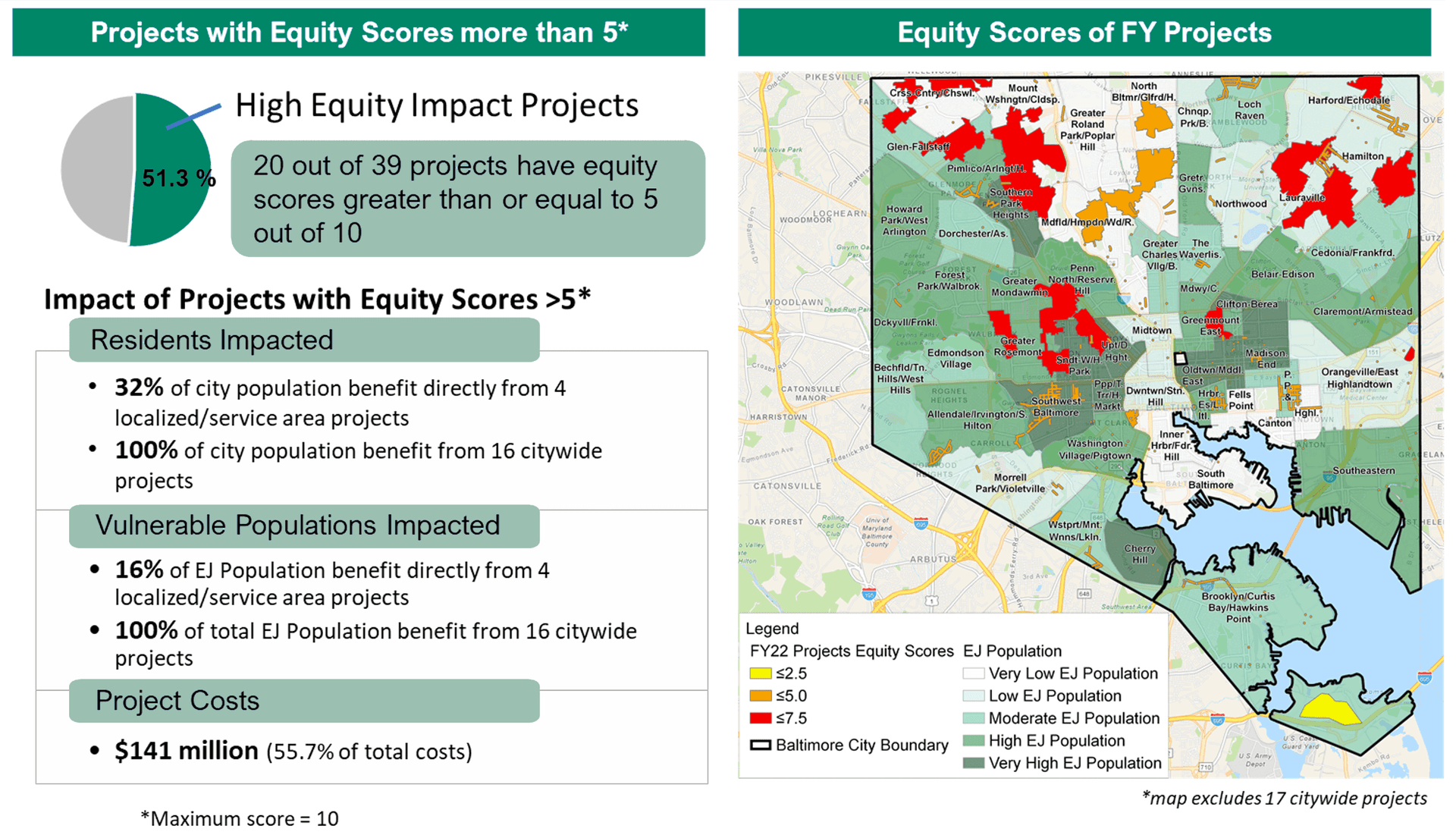
Delivering equitable infrastructure: a case study of Baltimore

Prompted by a rising movement to confront decades of policies causing racial and economic inequity, the city of Baltimore, Maryland in the United States passed a landmark Equity Assessment Ordinance in 2018 in a sincere effort to build a more equitable city.
The Equity Assessment Program requires that all Baltimore city agencies must proactively develop policies, practices and strategic investments to reverse disparity trends, act to eliminate structural and institutional racism and discrimination, and implement an equity action plan to incorporate equity principles into city actions, policies, and capital and operating budgets.
Furthermore, each agency must also produce an equity analysis of the impact of their programs and actions guided by overseeing equity committees, and train their staff on equity and inclusion principles.
In effect, the ordinance set out to comprehensively tackle the issue on all fronts and laid the groundwork for a robust understanding of the concept of equity itself, its various dimensions and how policies and actions could bring about positive change. This prompted the idea of an ‘Equity Lens’ that examined disparities in outcomes for citizens based on race, gender, sexual orientation, or income with specific considerations for the following equity dimensions:
Structural equity: relating to historic advantages or disadvantages affecting residents in the community
Procedural equity: inclusion of residents who have been historically excluded in participation for the planning, implementation, and evaluation of the proposed policies or projects
Distributional equity: distribution of civic resources and investment explicitly directed to address inequity
Transgenerational equity: ensuring projects do not impose unfair burdens on future generations, and improve conditions for prosperity in future generations within a community
Baltimore’s Equity Assessment Program set out an ambitious agenda and journey to transform the city from one of the most segregated and inequitable cities in America to a prosperous city with a more equitable future for its citizens. An essential enabler for this vision is the availability and tracking of data not only to define areas of need and intervention, but also to leverage technology to seamlessly facilitate, direct, and empower officials and citizens to make the right decisions towards the outcomes desired.
The Department of Public Works (DPW) was one of the first major departments in the city to take on the challenge of addressing race and inequity in their services, operations and budgets. In early 2019, soon after the city council passed the Equity Assessment Ordinance, DPW developed a framework of assessment for all their projects within the water, wastewater, stormwater and solid waste services. This framework was organized around the quadruple bottom line criteria in social, environmental, economic and operational categories.
This scoring framework, though comprehensive, placed equity as a single indicator influencing a mere eight percent of the score, and the whole process relied on project managers providing subjective inputs. AECOM, operating as program manager for DPW, recognized the need for improving this process and proposed to transform the equity assessment process into a robust data-driven, online tool that could score and track projects and progress towards the equity goals.
AECOM developed the digital tool with the following objectives:
1. Improve visibility and impact of equity in DPW decision-making: Develop an ‘Equity Lens’ for projects and capital planning project bundles that highlight how equity has been incorporated and considered. Increase the role of equity in scoring projects.
2. Make equity considerations more comprehensive: Include equity in all social, environmental, economic and operational criteria, and incorporate co-benefits for disadvantaged communities.
3. Improve equity analysis and insights: Incorporate a data-driven methodology that more accurately captures spatial and demographic context for projects, and impacts and provides ongoing analysis for effectiveness of the equity program.
Tool development process
AECOM set out to build the Equity Prioritization Tool using a proven process (see Figure 11) that was aligned with workflows that the DPW project managers and decision-makers are familiar with and comfortable using.

The key steps that followed included:
- Tool workflow and business process alignment: This was an essential step for success of the tool. It included identification of key user groups, their areas of interest and project types, the type of information they would provide and need to perform their task, and the sequence of actions.
The whole process was designed using a workshop setting inspired by the Joint Application Development (JAD) process, with engagement from key user representatives. The tool facilitated project creators and managers to input their project information and get valuable feedback on the equity implications. This enabled them to make informed decisions on project location and design components that would improve equity. The DPW’s program and budget managers could then assemble prioritized projects in project bundles that met citywide equity performance and investment goals. The tool was designed specifically to bridge the bottom-up and top-down processes with key output dashboards and reports.
- A robust and sustainable data setup: As the process was very data-driven, it was important to have a comprehensive set of readily available data compiled to facilitate analysis, but also structured so that this data could be easily and periodically updated from reliable sources. More than 100 layers of contextual data was compiled using automated scripts that pulled information from city map services, national and state data sources, and some from DPW’s own department data sets. The tool process took particular care to auto-populate any available data and make it easy to capture project information from the user using carefully designed user forms.
- Transparent evaluation criteria definitions and prioritization methodology: It was imperative that the evaluation criteria and the methodology for computing scores was not a ‘black box’ and was well-documented, transparent and with buy-in from a stakeholder engagement process. The tool facilitated some flexibility in allowing users to test different levels of importance to criteria so that the scoring process could be tested and validated.
- Visually attractive and easily navigable user interface: Usability was a prime design criterion for the tool along with simplicity and legibility as core principles. The tool was organized into logical modules with clear distinctions on the functions, purposes and outputs of each module. Whenever necessary, interactive maps, integrated help screens, and step-by-step workflows were built into the user interface design.
- Meaningful dashboards and outputs: In addition to facilitating project data inputs and analysis, an essential value of the tool is to provide clear and meaningful outputs in the form of dashboards. By making these interactive and interesting, users are prompted to explore how their projects impact equity and how they can potentially improve their benefits.
The project-level equity dashboard (see Figure 16 and Figure 17) was designed to clearly show who the project benefits, which needs it meets, which equity dimensions it addresses, and how it scores according to the established equity framework. The program level equity dashboard was designed to show a citywide impact of the planned project bundle, and how the collective set of projects would benefit disadvantaged communities, overall investment in equity challenged neighborhoods, and the distribution of equity impacting projects across the portfolio.
- Tool adoption with training and testing on real use cases: Also essential to the success of the tool was a carefully orchestrated adoption plan that engaged select users to participate in training to use the tool and become advocates to their peers within the department. Training workshops that used real use cases and working through everyday workflows allowed users to gain confidence and iron out any issues before an official rollout of the tool.


Lessons from Baltimore
The lessons from Baltimore DPW’s efforts to embrace an equity-based business process can be distilled into five key steps.
1. Acknowledge the structural bias and lack of social equity in the current systems.
Using robust data analysis and visualization, we must clearly show that disparity exists and build consensus on the idea that it is in the interest of the larger community that efforts to mitigate that disparity must be made. Specific goals and policies must be adopted to set this in motion.
2. Develop or adopt an equity-based framework for key decision-making.
It is important to consider a multi-criteria framework which defines an ‘Equity Lens’ that comprehensively examines equity implications of each proposed action along with other performance and cost considerations. This equity lens should be applied at the individual project level and, more importantly, at the program level to ensure that capital planning budgets systematically select and include projects which address equity issues in addition to performance gaps in the system.
3. Make it easy and seamless to incorporate equity in infrastructure decisions.
Having automated data-driven tools that facilitate and guide city engineers, planners and policy makers through an equity-based process for project and program development can help achieve the equity goals and outcomes. It is important to have these tools aligned to existing workflows, be user-friendly, transparent and accessible.
4. Track progress over time.
Tracking progress through real quantifiable metrics and holding responsible departments or agencies accountable through regular reporting requirements and review by city councils and the public will be essential.
5. Empower the community.
Equally essential is a regular dialogue on equity between citizens, policy-makers and project engineers. The dialogue includes education, awareness and guidance on how equity considerations can shape decisions and citizens can be involved. A digital system such as AECOM’s PlanEngage platform, that can gather regular feedback from disadvantaged communities and stakeholders and channel that feedback into the evaluation framework, is an essential ingredient for success.